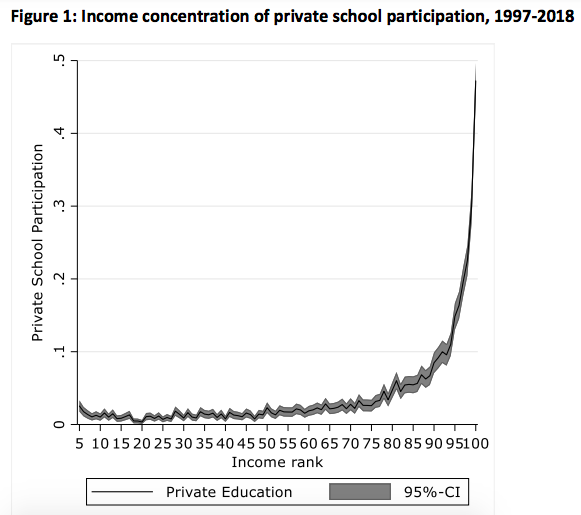
Title:
“Income, housing wealth, and private school access in Britain.”
Authors:
Henseke, G., Anders, J., Green, F., & Henderson, M. (2021). Education Economics.
What’s it about?
With fees averaging well over £17,000 it is common knowledge that private school pupils generally come from high-income families.
However, some families with low and middle-income families also attend. This is the first and only study to examine the social composition of private school pupils in detail, and whether this has changed over the years.
It studies the effects of income and of housing wealth on the likelihood of attending a fee-paying school, and the role of bursary grants.
Methodology
The study used data from the Family Resources Survey – a high-quality government survey of between 20,000 and 25,000 households every year.
It looked at those households in Britain with children aged between 5 and 15: from 1997 to 2017 this amounted to 155,000 children altogether. The data record the type of school attended, and whether a scholarship or bursary grant is received.
What are the findings?

The diagram shows that the proportion of children attending private school is just a little above zero across the vast majority of the income distribution.
- It does not rise above 10 percent except among those with the top percent of incomes. In fact, for most people below the top income levels, rises or falls in income make no significant difference to the likelihood of private school participation.
- This level of concentration of private school attendance changed by only a small amount in the course of this century. Among those in the bottom 40 percent of the income distribution, the proportion attending private school edged up from 1.1 percent over 1997-2003 to 2.1 percent over 2011 to 2017.
- Family wealth is the main explanation of why small numbers of families with low incomes manage to attend private schools. Whatever their income level, the study finds that families with greater housing wealth are more likely to pay for private schooling.
- Looking just at those pupils in lower secondary school, bursaries and scholarships have become a little more progressive, that is, more concentrated among lower income households. However, only one in six pupils receive a bursary or scholarship grant, and the grant value has diminished as a proportion of fees, from 57 percent over 1997-2003 to 35 percent over 2011-2017.
Henseke and Anders sum up the study’s implications for bursaries in their UCL Institute of Education blog:
“Our findings imply that while existing bursaries offered by private schools do perform a somewhat progressive role, they are far too small and scarce to make much of a real dent in private schools’ exclusivity.
“Means-tested bursaries would need to expand considerably in reach and scale, and the selection criteria should take into account family wealth, not just income.”
What are the limitations of this research?
The study had no data on other (non-housing) forms of wealth which may also affect the ability to pay school fees. In the first period (1997-2003), payments under the dwindling Assisted Places Scheme may be missed if they are paid directly to the school by the government.
The data do not distinguish between scholarships (which do not need to be means-tested) and bursaries. The study did not look at bursaries for primary age children, which are typically scarce.
Explained by: Francis Green, Professor of Work and Education Economics at UCL Institute of Education.



